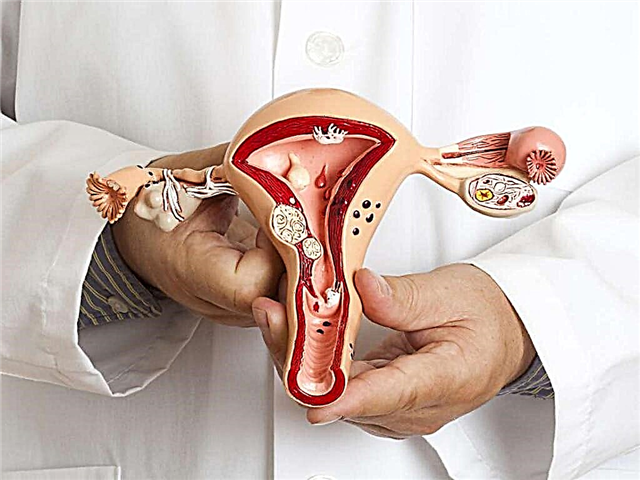Whether you are a toddler or a teenager, he will occasionally suffer from diarrhea, indigestion, excessive belching, stomach pain, or heartburn. Sometimes stress associated with a big event in your child's life (such as the first day of school, exams, or a sports event) can cause digestive upset.
However, when these digestive disorders in children become more frequent, this is the best time to see a specialist. After all, a child may have various diseases of the digestive tract, one of which is gastroesophageal reflux disease (GERD), when food from the stomach returns to the esophagus, causing unpleasant symptoms.
In the first year, spitting up is normal in babies. It usually takes about a year for the lower esophageal sphincter to form completely. If reflux persists afterwards, it can lead to an inability to gain weight normally, irritation of the esophagus, and trouble breathing.
Symptoms
Heartburn, or acid dyspepsia, is the most common symptom of GERD.
Heartburn is described as a burning chest pain. It starts behind the breastbone and moves to the throat and neck. This can last up to 2 hours, often worse after eating. Lying down or bending over after a meal can also lead to heartburn.
Children younger than 12 years old often have various symptoms of GERD.
They have a dry cough, asthma symptoms, or trouble swallowing. They will not have the classic heartburn.
Each child may have different symptoms.
Common symptoms of GERD in children are as follows:
 frequent regurgitation or belching;
frequent regurgitation or belching;- poor appetite;
- pain in the stomach;
- the child is overly capricious during feeding;
- frequent vomiting or vomiting;
- hiccups;
- labored breathing;
- frequent coughing, especially at night.
Other, less common symptoms:
- the child often has a cold;
- frequent ear infections;
- sore throat in the morning;
- sour taste in the mouth;
- bad breath;
- loss of teeth or decay of tooth enamel.
GERD symptoms can be similar to those of other conditions.
Long-term hyperacidity in the esophagus can lead to a precancerous condition called Barrett's syndrome, which can progress to esophageal cancer if the disease is not controlled, although this is rare in children.
Causes of the disease
Gastroesophageal reflux disease in children is caused by a failure of the lower esophageal sphincter. The esophageal sphincter is a muscle at the bottom of the digestive tube (esophagus). In normal condition, it acts as a backflow prevention valve.
The sphincter opens to allow food to enter the stomach, then closes. When it relaxes too often or for too long, stomach acid returns to the esophagus. This provokes vomiting or heartburn.
 The lower esophageal sphincter becomes weak or relaxes for certain reasons:
The lower esophageal sphincter becomes weak or relaxes for certain reasons:
- increased pressure on the abdomen from overweight, obesity;
- Taking certain medications, including antihistamines, antidepressants and pain relievers, medications for asthma
- second hand smoke.
Certain foods affect the muscle tone of the esophageal sphincter. They make it open longer than usual.
These include mint, chocolate, and high fat foods.
Other foods provoke excessive stomach acid production. These are citrus fruits, tomatoes and tomato sauces.
Other causes of GERD in a child or adolescent:
- surgery on the esophagus;
- severe developmental delay or a neurological condition such as cerebral palsy.
What are the children at risk?
GERD is very common in the first year of a baby's life. It often goes away on its own.
Your child is more at risk for GERD if they:
- Down syndrome;
- neuromuscular disorders such as muscular dystrophy.
Diagnostics
Usually, a doctor can diagnose reflux after examining the child's symptoms and medical history as described by the parents. Especially if this problem occurs regularly and causes discomfort.

Several tests can help a doctor diagnose GERD. The diagnosis of GERD can be confirmed by one or more tests:
- Chest x-ray. With the help of an X-ray, it can be found that the contents of the stomach have moved to the lungs. This is called aspiration.
- Swallowing barium. This method allows you to examine the organs in your child's upper digestive system - the esophagus, stomach, and the first part of the small intestine (duodenum). The baby swallows the barium suspension and it covers the organs so that they can be seen on an X-ray. X-rays are then taken to check for signs of erosion, ulceration, or abnormal obstruction.
- PH control. This test checks the pH, or acid level, in the esophagus. A thin plastic tube is placed in the baby's nostril, down the throat, and further down the esophagus. The tube contains a sensor that measures the pH level. The other end of the tube, outside of the baby's body, is attached to a small monitor. The pH level is recorded for 24 - 48 hours. During this time, the child can go about his usual activities.
You will need to keep a diary of any symptoms the child feels that may be related to reflux. These include vomiting or coughing. You should also keep track of the time, type and amount of food your child eats. The pH levels are checked, compared with the baby's activity over this period of time.
- The best diagnostic the research method for esophagitis is a biopsy of the esophagus, which is often performed during an upper gastrointestinal endoscopy. In endoscopy, a flexible plastic tube with a tiny camera at the end is inserted through the mouth and pushed down the throat into the esophagus and stomach. During this test, which takes about 15 minutes, the walls of the esophagus and stomach are carefully checked for signs of inflammation. During the biopsy, pieces of the superficial tissue layer are taken. They are checked under a microscope. Endoscopy results will not keep you waiting long: hiatal hernia, ulcers and inflammation are easily detected. Accurate diagnoses sometimes require biopsy results, which will be ready a day or two after the endoscopy.
- Esophageal manometry. This test checks the strength of the esophageal muscles. This test can be used to see if a child has reflux or swallowing problems. A small tube is inserted into the baby's nostril, then into the throat and esophagus. The device then measures the pressure that the muscles of the esophagus have at rest.
- Study of the evacuation function of the stomach. This test is done to make sure that the baby's stomach is moving the contents into the small intestine correctly. Delayed stomach emptying can cause reflux into the esophagus.
Treatment
Treatment for GERD in children will depend on symptoms, age, and general health. It will also depend on the severity of the condition.
Diet and lifestyle changes
In many cases, diet and lifestyle changes can help relieve symptoms of GERD. Talk to a professional about the changes you can make.
Here are some tips to better manage your symptoms:
For babies:
- After feeding, hold the baby upright for 30 minutes;
- when bottle feeding, the teat should always be filled with milk. The child will not swallow too much air while eating;
- adding rice porridge to complementary foods may be beneficial for some babies;
- let your baby burp several times during breastfeeding or bottle feeding.
For older children:
- follow the child's menu. Limit fried and fatty foods, mint, chocolate, caffeinated drinks, sodas and teas, citrus fruits and juices, and tomato products.
- invite your child to eat less in one meal. Add a small snack between feedings if your baby is hungry. Avoid overeating in your child. Let him tell you when he is hungry or full;
- serve dinner 3 hours before bedtime.
Other methods:
- ask your doctor to review your child's medication. Some medications can irritate the stomach or esophagus;
- do not let your child lie or go to bed immediately after eating;
- medicines and other treatments.
Medicines
A doctor may prescribe medications to relieve symptoms. Some medicines are sold without a prescription.
All reflux medications work differently. A child or teenager may need a combination of drugs to completely control symptoms.
Antacids
 Doctors often recommend antacids first to relieve reflux and other symptoms of GERD. The doctor will tell you what antacids you can give your child or teenager. The most common are Maalox, Gaviscon, Almagel.
Doctors often recommend antacids first to relieve reflux and other symptoms of GERD. The doctor will tell you what antacids you can give your child or teenager. The most common are Maalox, Gaviscon, Almagel.
H2 blockers
Gastric H2 receptor blockers reduce acid production. They provide short-term relief for many people with GERD symptoms. They can also help treat esophageal disorders, although not as well as other medications.
Types of H2 blockers include:
- Cimetidine;
- Famotidine;
- Nizatidine;
- Ranitidine.
If a child or teen develops heartburn after eating, the doctor may prescribe an antacid and an H2 blocker. Antacids neutralize stomach acid while H2 blockers protect the stomach from excess acid production. By the time the antacids wear off, H2 blockers control stomach acid.
Proton pump inhibitors (PPIs)
PPIs lower the amount of acid your stomach produces. PPIs are better at treating reflux symptoms than H2 blockers. They can cure most people with GERD. Doctors often prescribe PPIs for long-term treatment of the condition.
Research shows that people who take PPIs for long periods of time or in high doses are more likely to have fractures of the hip, wrist, and spine.
A child or teenager must take these medications on an empty stomach for stomach acid to work properly.
Several PPIs are available with a doctor's prescription, including:
- Esomeprazole;
- Lansoprazole;
- Omeprazole;
- Pantoprazole;
- Rabeprazole.
All drugs can have side effects. Do not give your child medication without first consulting a doctor.
Operative treatment
In severe cases of reflux, surgery can be performed - fundoplication. The doctor may recommend this option when the child is not gaining weight due to vomiting, has problems with the respiratory system, or severe irritation in the esophagus.
 The intervention is performed as a laparoscopic operation. It is a painless method with fast postoperative recovery.
The intervention is performed as a laparoscopic operation. It is a painless method with fast postoperative recovery.
Small incisions are made in the baby's abdomen, and a small tube with a camera at the end is placed in one of the incisions to look inside.
Surgical instruments are passed through other incisions. The surgeon looks at the video screen to see the stomach and other organs. The upper part of the stomach wraps around the esophagus, which creates a narrow band. This strengthens the lower esophageal sphincter and significantly reduces reflux.
A surgeon performs an operation in a hospital. The child receives general anesthesia and can leave the hospital after 1 to 3 days. Most children return to their normal daily activities after 2 to 3 weeks.
Endoscopic techniques such as endoscopic sewing and high-frequency waves help control GERD in a small number of people. For endoscopic sewing, small stitches are used to compress the sphincter muscle.
High frequency waves create heat damage that helps tighten the sphincter muscle. The surgeon performs both operations using an endoscope in a hospital or on an outpatient basis.
The results of such endoscopic techniques may not be as good as those of fundoplication. Doctors do not recommend using these methods.
Facts Parents Should Know About Childhood Reflux:
- The main signs of GERD in children are vomiting or reflux. Children may complain of tummy pain, a feeling of pressure in the chest, a foreign sensation in the throat, a burning sensation in the chest, or they may appear overly irritable or agitated.
- It is important to distinguish physiological (normal) digestive events from disease. Mild regurgitation is normal for most healthy, growing babies in their first year. In 95% of cases, babies will outgrow this by the time they are 12 to 15 months old. This condition is actually physiological reflux, a normal occurrence, not GERD. Parents can relax in the knowledge that regurgitation or reflux rarely persists into the second year of a baby's life, or perhaps a little longer for premature babies.
- A small percentage of babies who regurgitate very often or violently, cry, cough, stress, or lose weight may actually have GERD or another medical condition. GERD is more common in children 2 to 3 years of age and older. If your child has these persistent symptoms, see a doctor.
- Between 5-10% of children aged 3-17 years have upper abdominal pain, belching, heartburn, and vomiting - all symptoms that may indicate a diagnosis of GERD. Only a physician should determine if it is really reflux disease or possibly another condition.
- The variety of GERD symptoms increases with age in children. It can be associated with shortness of breath, chronic cough, bad breath, sinusitis, hoarseness, and pneumonia. As children get older, the symptoms of reflux disease become similar to those in adults.

 frequent regurgitation or belching;
frequent regurgitation or belching;

